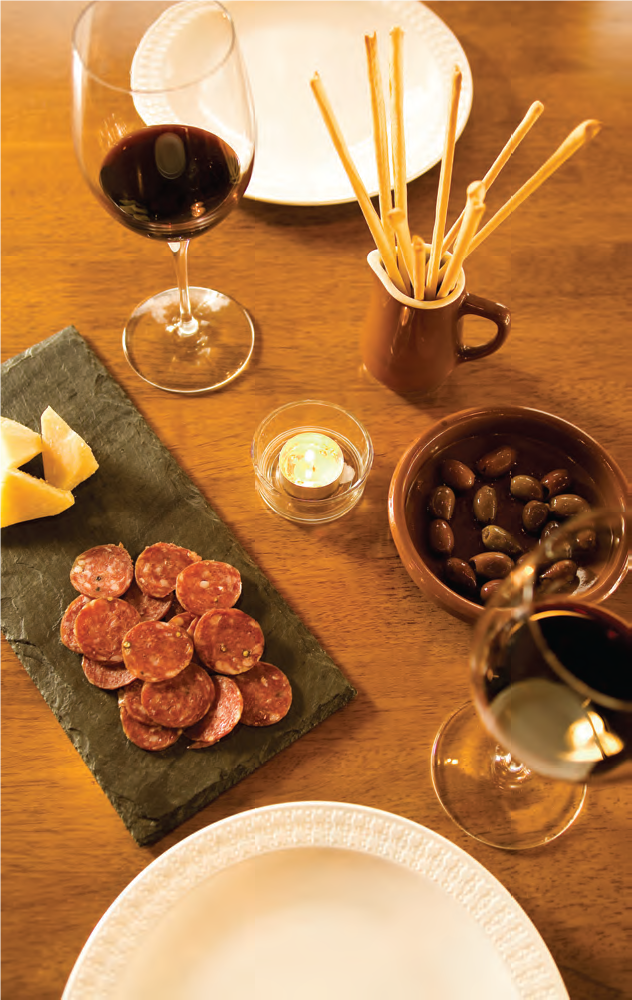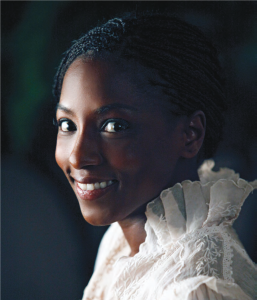If that’s how dieting makes you feel, then it’s time for a new Rx
If sticking to a diet were literally to boil down to a life-ordeath choice, could you do it? Anyone who’s fought an unsuccessful battle of the bulge has, at one time or another, considered this extreme set of circumstances. The fact that we actually wonder about such things says a lot about our attitude toward dieting. It suggests that, for a great many of us, eating healthy and living healthy won’t start until we have a gun pressed to our heads. Or some other vital organ. In his practice at  Trinitas Regional Medical Center, Dr. Ari S. Eckman, M.D., sees a steady stream of patients dealing with diabetes—a disease approaching epidemic proportions— and also hypothyroidism, another disorder that is growing, particularly among women. When asked if his high-risk patients were better dieters than most, the Chief of TRMC’s Division of Endocrinology, Diabetes & Metabolism said that yes, initially they are. “But many do lapse over time,” he admits. Apparently, risk alone is no guarantee of success. Dr. Eckman is quick to confirm this fact. He maintains that dieting is not so much about food as it is about lifestyle. The root of the word “diet” actually comes from the Greek word diaita, which means a “prescribed way of living.” Dieting, he insists, doesn’t have to mean depriving. That being said, he cautions, the whole point of dieting is to lose weight. “Make no mistake about that.” The Power of Positive Eating Google “diet” on your computer and the results are overwhelming. You’ll discover page after page of sites that are overflowing with imaginative menus and mouthwatering recipes. Whichever one you choose, says Dr. Eckman, you can increase the chance for success by following these ground rules: Spice Up Your Life Although salt can amp up flavor, there are a lot of other herbs and spices, both dried and fresh, that can compensate: pepper, oregano, basil, cumin, garlic, cilantro and the well-sung quartet of parsley, sage, rosemary, and thyme.
Trinitas Regional Medical Center, Dr. Ari S. Eckman, M.D., sees a steady stream of patients dealing with diabetes—a disease approaching epidemic proportions— and also hypothyroidism, another disorder that is growing, particularly among women. When asked if his high-risk patients were better dieters than most, the Chief of TRMC’s Division of Endocrinology, Diabetes & Metabolism said that yes, initially they are. “But many do lapse over time,” he admits. Apparently, risk alone is no guarantee of success. Dr. Eckman is quick to confirm this fact. He maintains that dieting is not so much about food as it is about lifestyle. The root of the word “diet” actually comes from the Greek word diaita, which means a “prescribed way of living.” Dieting, he insists, doesn’t have to mean depriving. That being said, he cautions, the whole point of dieting is to lose weight. “Make no mistake about that.” The Power of Positive Eating Google “diet” on your computer and the results are overwhelming. You’ll discover page after page of sites that are overflowing with imaginative menus and mouthwatering recipes. Whichever one you choose, says Dr. Eckman, you can increase the chance for success by following these ground rules: Spice Up Your Life Although salt can amp up flavor, there are a lot of other herbs and spices, both dried and fresh, that can compensate: pepper, oregano, basil, cumin, garlic, cilantro and the well-sung quartet of parsley, sage, rosemary, and thyme. Most Americans need to reduce their daily salt intake. This is doubly true for people trying to lose weight. Think Outside the Box Get creative in your kitchen. Take advantage of seasonal produce. Cook veggies several different ways (roast, steam, grill) for different taste and texture…and raw is always beautiful. Make fruit a part of your meal to stave off a major sugar craving. Dress Up Your Diet Visually feast, don’t just blindly eat! Set a pretty plate. Garnish your heart out. Color-coordinate healthy food choices. Use your best china. Sip water out of a crystal goblet. Presentation goes a long way—cater to all of your senses, not just your taste buds. Move Away from the Kitchen At home, dine someplace other than where the food is, namely the kitchen. You’ll have to get up for second helpings. The extra steps will make you take notice of how much you’re consuming. Work In a Workout A diet without exercise is a recipe for failure. Find 30 minutes each day to break a sweat with some cardio activity, and not necessarily all in a single interval. Park your car a little farther from the office or the supermarket. If you work at home, devote the commuting time saved to exercise. No buts to getting off your butt. Lead Yourself Not into Temptation Drive by the driveins. Clean out your cupboards. Eat five to six small meals a day rather than only two; your body seeks to metabolize— deny it by skipping a meal and you’ll overeat at the next. Monitor the Usual Suspects Forego the fad diets; better to identify your specific food weaknesses and just stay away from them. That way a minor slip-up won’t lead to a major binge! Among the same search-engine results that yield great recipes for different diets, you will also find lengthy dissertations on the challenges to success: temptation, boredom, stress, self-indulgence and the need for instant gratification. To that, says Dr. Eckman, you can add resentment. Nothing can sabotage a diet’s success more than hating the fact that you have to diet at all. Ultimately, he says, we will comfort ourselves by giving in to cravings. We’ll indulge ourselves with dangerous “treats.” We’ll eat, drink and yet we still won’t feel particularly merry. Denial is also a definite diet-killer, adds Dr. Eckman. “Too often I hear patients claim that they don’t eat much! The problem is how much is ‘much’ to them? And it may not even be how much they eat, but how wrong they eat,” he says. “If you can’t see the real you when you look in the mirror, then maybe you need to go out and buy a good scale…and then be sure to step on it.” The numbers won’t lie. EDGE
Most Americans need to reduce their daily salt intake. This is doubly true for people trying to lose weight. Think Outside the Box Get creative in your kitchen. Take advantage of seasonal produce. Cook veggies several different ways (roast, steam, grill) for different taste and texture…and raw is always beautiful. Make fruit a part of your meal to stave off a major sugar craving. Dress Up Your Diet Visually feast, don’t just blindly eat! Set a pretty plate. Garnish your heart out. Color-coordinate healthy food choices. Use your best china. Sip water out of a crystal goblet. Presentation goes a long way—cater to all of your senses, not just your taste buds. Move Away from the Kitchen At home, dine someplace other than where the food is, namely the kitchen. You’ll have to get up for second helpings. The extra steps will make you take notice of how much you’re consuming. Work In a Workout A diet without exercise is a recipe for failure. Find 30 minutes each day to break a sweat with some cardio activity, and not necessarily all in a single interval. Park your car a little farther from the office or the supermarket. If you work at home, devote the commuting time saved to exercise. No buts to getting off your butt. Lead Yourself Not into Temptation Drive by the driveins. Clean out your cupboards. Eat five to six small meals a day rather than only two; your body seeks to metabolize— deny it by skipping a meal and you’ll overeat at the next. Monitor the Usual Suspects Forego the fad diets; better to identify your specific food weaknesses and just stay away from them. That way a minor slip-up won’t lead to a major binge! Among the same search-engine results that yield great recipes for different diets, you will also find lengthy dissertations on the challenges to success: temptation, boredom, stress, self-indulgence and the need for instant gratification. To that, says Dr. Eckman, you can add resentment. Nothing can sabotage a diet’s success more than hating the fact that you have to diet at all. Ultimately, he says, we will comfort ourselves by giving in to cravings. We’ll indulge ourselves with dangerous “treats.” We’ll eat, drink and yet we still won’t feel particularly merry. Denial is also a definite diet-killer, adds Dr. Eckman. “Too often I hear patients claim that they don’t eat much! The problem is how much is ‘much’ to them? And it may not even be how much they eat, but how wrong they eat,” he says. “If you can’t see the real you when you look in the mirror, then maybe you need to go out and buy a good scale…and then be sure to step on it.” The numbers won’t lie. EDGE
Editor’s Note: Dr. Eckman completed a fellowship in Endocrinology and Metabolism at Johns Hopkins University. In addition to providing medical treatment for Diabetes and Thyroid conditions, his practice, Premier Diabetes & Endocrinology (tel: 908 994 5187), extends to a broad range of health conditions, including polycystic ovarian syndrome, osteoporosis and other calcium disorders, low testosterone levels and lipid abnormalities.
When it comes to picky eaters, the truth may not be that hard to swallow
We’ve all heard the stories—the child who completely shuns vegetables or refuses to consume anything but white foods. They’re funny if you aren’t the parent  trying to get healthy food into a picky eater. If the kid is yours, however, it’s no joke. There are reasons for your child’s peculiar eating habits, and things you can do to broaden his or her culinary horizons. First off, you may be surprised to learn that it’s hardly ever a matter of taste. Picky eating is a natural part of toddlerhood, as children express their independence. What parents may believe is a fussy eater may not actually be that at all. “Children don’t tend to eat as much at meals as adults expect them to eat, and babies spit out their food, leading parents to believe that they don’t like it,” says Dr. Maria Padron, a pediatric and adolescent psychiatrist at Trinitas Regional Medical Center. “But babies taste food by spitting it out and licki
trying to get healthy food into a picky eater. If the kid is yours, however, it’s no joke. There are reasons for your child’s peculiar eating habits, and things you can do to broaden his or her culinary horizons. First off, you may be surprised to learn that it’s hardly ever a matter of taste. Picky eating is a natural part of toddlerhood, as children express their independence. What parents may believe is a fussy eater may not actually be that at all. “Children don’t tend to eat as much at meals as adults expect them to eat, and babies spit out their food, leading parents to believe that they don’t like it,” says Dr. Maria Padron, a pediatric and adolescent psychiatrist at Trinitas Regional Medical Center. “But babies taste food by spitting it out and licki ng it, and if parents believe their child doesn’t like it and don’t continue to introduce that food, it becomes a foreign food to them.” Well-meaning parents may try to cater to a picky eater, but experts say that that only backfires. “They create a monster,” Dr. Padron explains. “Unless there’s a medical contraindication, children should be ‘helped’ to eat everything that the family eats.” Easier said than done, right? Don’t give up until you’ve exhausted these strategies: Offer variety earlier. “Kids often become picky eaters because they haven’t been exposed to a lot of foods,” Dr. Padron says. “You should slowly expose children to different kinds of foods.” Hold your ground. Your child may decide to go on a hunger strike for a meal or two if you suddenly stop being a short order cook and insist that he eats what you’re eating, but he won’t hold out forever. “Kids may refuse to eat for a few meals, but as long as they’re healthy and still drinking liquids, it’s fine,” Dr. Padron says. “When he’s hungry, your child will eat.” Keep reintroducing the same food. “Parents need to be patient w
ng it, and if parents believe their child doesn’t like it and don’t continue to introduce that food, it becomes a foreign food to them.” Well-meaning parents may try to cater to a picky eater, but experts say that that only backfires. “They create a monster,” Dr. Padron explains. “Unless there’s a medical contraindication, children should be ‘helped’ to eat everything that the family eats.” Easier said than done, right? Don’t give up until you’ve exhausted these strategies: Offer variety earlier. “Kids often become picky eaters because they haven’t been exposed to a lot of foods,” Dr. Padron says. “You should slowly expose children to different kinds of foods.” Hold your ground. Your child may decide to go on a hunger strike for a meal or two if you suddenly stop being a short order cook and insist that he eats what you’re eating, but he won’t hold out forever. “Kids may refuse to eat for a few meals, but as long as they’re healthy and still drinking liquids, it’s fine,” Dr. Padron says. “When he’s hungry, your child will eat.” Keep reintroducing the same food. “Parents need to be patient w hen they’re introducing new foods, and not get upset if kids aren’t jumping to eat broccoli right away,” Dr. Padron advises. Even if your children didn’t like asparagus the first few times, all it may take is the repetition (or a new way of serving it) to make them like it the 10th time around. You just need to insist on one bite each time you serve it— if they still don’t like it, don’t force it. Get your kids involved. Take your kids along to the grocery store and let them choose something new to try in the produce department—and if you have the time, let them get involved in preparing the dinner, too. By allowing your child to have a say in what they’re eating and an investment in the meal, you may find that they’re more willing to eat the fruit they picked out or the side dish they helped make. Minimize distractions at dinnertime. If there are other forms of entertainment beyond eating—a TV, books or toys—that can keep kids from attending to the task at hand. Instead, look for ways to make the meal itself more entertaining, with a colorful variety of vegetables or interesting presentations. Seek help. Get your pediatrician on board, especially if it’s been a long-standing issue, where your child’s eating habits may have become ingrained. For more severe cases, your pediatrician may recommend speaking to an expert, such as a counselor or a speech or occupational therapist. Indeed, in some instances, picky eating can be the sign of a more serious issue—a sensory disorder or a mechanical issue with feeding. So when is the right time to call in professional help? “In children with feeding issues, it could be a textural or tactile issue, often with mushy foods like bananas or yogurt,” says Kevin Nelson, occupational therapist and Manager of Trinitas Children’s Therapy Services. “Or it can be a mechanical issue, where they simply don’t have the musculature in their mouth to handle that food.” Whatever the cause of a child’s pickiness, in the end the key is to work slowly. Your kid won’t become an adventurous eater overnight, and if the issues are more sensory or mechanical in nature, you may need to follow a much gentler, slower path toward introducing these foods.
hen they’re introducing new foods, and not get upset if kids aren’t jumping to eat broccoli right away,” Dr. Padron advises. Even if your children didn’t like asparagus the first few times, all it may take is the repetition (or a new way of serving it) to make them like it the 10th time around. You just need to insist on one bite each time you serve it— if they still don’t like it, don’t force it. Get your kids involved. Take your kids along to the grocery store and let them choose something new to try in the produce department—and if you have the time, let them get involved in preparing the dinner, too. By allowing your child to have a say in what they’re eating and an investment in the meal, you may find that they’re more willing to eat the fruit they picked out or the side dish they helped make. Minimize distractions at dinnertime. If there are other forms of entertainment beyond eating—a TV, books or toys—that can keep kids from attending to the task at hand. Instead, look for ways to make the meal itself more entertaining, with a colorful variety of vegetables or interesting presentations. Seek help. Get your pediatrician on board, especially if it’s been a long-standing issue, where your child’s eating habits may have become ingrained. For more severe cases, your pediatrician may recommend speaking to an expert, such as a counselor or a speech or occupational therapist. Indeed, in some instances, picky eating can be the sign of a more serious issue—a sensory disorder or a mechanical issue with feeding. So when is the right time to call in professional help? “In children with feeding issues, it could be a textural or tactile issue, often with mushy foods like bananas or yogurt,” says Kevin Nelson, occupational therapist and Manager of Trinitas Children’s Therapy Services. “Or it can be a mechanical issue, where they simply don’t have the musculature in their mouth to handle that food.” Whatever the cause of a child’s pickiness, in the end the key is to work slowly. Your kid won’t become an adventurous eater overnight, and if the issues are more sensory or mechanical in nature, you may need to follow a much gentler, slower path toward introducing these foods.
“Seeing a therapist is not the first step in a long and expensive process.” 
“We slowly try to introduce the textures to them,” Nelson explains. “If they have an issue with mushy textures, we might start to do some play with finger paint or shaving cream to get them comfortable with that texture. Then we’ll have them sit at a table with the yogurt on the table, then put a dab on their finger, maybe have them smell it. Finally, we’ll put a dab on their tongue. We slowly try to get it closer to get them to tolerate it.” Depending on the severity of the issues, this process could take months. However, if you consistently work with children at home as well as in therapy, you may find that you’ll move faster toward turning your child into a well-rounded eater. Also, understand that seeing a therapist is not the first step in a long and expensive process. On the contrary, says Nelson. “You may need to see a therapist for an initial consultation, just to get started in the right direction and get trained on how to handle it.” “A lot of our job is educating parents on what’s appropriate,” he says, “and how to deal with different situations.” EDGE
Editor’s Note: Lisa Milbrand is a New Jersey-based writer whose articles on health and relationships appear in Parents, Arthritis Today and Modern Bride. Her blog themamahood.com celebrates the life of a working mother.
Buying art means buying smart. So what’s the deal with your neighborhood gallery?
In the typical suburban New Jersey home, you’re more likely to find a good guy named Art than good art. That’s fine if your goal is to own an undistinguished sofa-sized oil. But what if you want fine art—the kind that will brighten your life and fatten your bottom line? The answer may be as close as your local gallery. For those who believe you have to cross the Hudson to find investment-grade art, this idea may go against the grain. But the fact is that building a relationship with a gallery (or galleries) here in the Garden State can yield a far greater return—not just in terms of value and quality, but in so many other ways. This applies to the seasoned collector as well as the novice. In fact, if you’re like so many New Jerseyans, the thought of opening your checkbook in a local art gallery is nothing short of terrifying. First things first. Let’s wrap our minds around the reasons New Jerseyans don’t buy art. Above all there is the intimidation factor. Most people are afraid they’ll be taken to the cleaners by an unscrupulous gallery owner.
That’s fine if your goal is to own an undistinguished sofa-sized oil. But what if you want fine art—the kind that will brighten your life and fatten your bottom line? The answer may be as close as your local gallery. For those who believe you have to cross the Hudson to find investment-grade art, this idea may go against the grain. But the fact is that building a relationship with a gallery (or galleries) here in the Garden State can yield a far greater return—not just in terms of value and quality, but in so many other ways. This applies to the seasoned collector as well as the novice. In fact, if you’re like so many New Jerseyans, the thought of opening your checkbook in a local art gallery is nothing short of terrifying. First things first. Let’s wrap our minds around the reasons New Jerseyans don’t buy art. Above all there is the intimidation factor. Most people are afraid they’ll be taken to the cleaners by an unscrupulous gallery owner.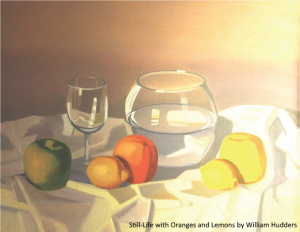 Second, they are nervous that their friends will make fun of a purchase that is different and modern, or simply out of character. Feeding this double-barreled paranoia is the fact that—particularly in the case of an abstract piece—one cannot specifically define the level of talent and technical skill involved in producing modern art. And on top of these very legitimate fears is the great, big elephant in the room: Why, when New York City is so close, would anyone buy art in New Jersey in the first place? Permit me to deal with this last objection first. Galleries here in New Jersey are indeed different than most galleries in the city. That is to say that they are friendly and approachable. If you think about it, it makes complete sense. Gallery owners are where they are, and do what they do, because they love and appreciate art. If they were in this business to make a killing, I hate to say it but they would be in Manhattan. What else does New Jersey have to offer art buyers that the city doesn’t? Well, there is a lot of first-rate talent that, for one reason or another, is only shown on this side of the Hudson.
Second, they are nervous that their friends will make fun of a purchase that is different and modern, or simply out of character. Feeding this double-barreled paranoia is the fact that—particularly in the case of an abstract piece—one cannot specifically define the level of talent and technical skill involved in producing modern art. And on top of these very legitimate fears is the great, big elephant in the room: Why, when New York City is so close, would anyone buy art in New Jersey in the first place? Permit me to deal with this last objection first. Galleries here in New Jersey are indeed different than most galleries in the city. That is to say that they are friendly and approachable. If you think about it, it makes complete sense. Gallery owners are where they are, and do what they do, because they love and appreciate art. If they were in this business to make a killing, I hate to say it but they would be in Manhattan. What else does New Jersey have to offer art buyers that the city doesn’t? Well, there is a lot of first-rate talent that, for one reason or another, is only shown on this side of the Hudson. 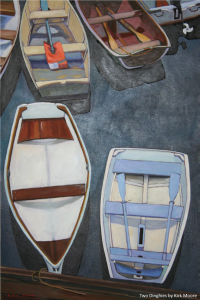 There is no comparison in terms of service. Try walking into a gallery on West Broadway or Madison Avenue and asking the owner to drive out to your place in Westfield for a consultation. That thud is the sound of his jaw hitting the floor. A gallery owner in or around your town, on the other hand, will likely welcome this opportunity. New Jersey art dealers are genuinely interested in the people who live around them, and cultivating relationships that extend beyond the buying and selling of art. They are part of the fabric of the community. Connecting with a local gallery also happens to be a superb way of adding texture to your social life. Once you’re “on the list” you’ll be invited to opening receptions whenever a new artist is featured. How often do you get to mix and mingle with new people who just happen to share a common interest? The majority of people attending gallery openings are like you—they want to know more about art and the people who buy it. (By the way, a free wine-and-cheese gathering is a wonderful springboard to dinner, a movie, or whatever else you’ve planned for an evening out.) Okay, so what about the financial side of the gallery relationship? Now more than ever, as we balance the merits of saving and spending, it is important to know what you get for your money when you purchase a work of art. Whether the price tag is several hundred or several thousand, dealers who live and work nearby are unlikely to “rip off” customers; they have reputations to uphold. If you happen to be one of the fortunate few who have five or six figures to invest in art, a good dealer will have solid connections to galleries that can point you in the right direction (and more importantly, steer you clear of the wrong direction). Either way, if your appreciation of art is tied to its potential appreciation, make that clear to the gallery owners you deal with.
There is no comparison in terms of service. Try walking into a gallery on West Broadway or Madison Avenue and asking the owner to drive out to your place in Westfield for a consultation. That thud is the sound of his jaw hitting the floor. A gallery owner in or around your town, on the other hand, will likely welcome this opportunity. New Jersey art dealers are genuinely interested in the people who live around them, and cultivating relationships that extend beyond the buying and selling of art. They are part of the fabric of the community. Connecting with a local gallery also happens to be a superb way of adding texture to your social life. Once you’re “on the list” you’ll be invited to opening receptions whenever a new artist is featured. How often do you get to mix and mingle with new people who just happen to share a common interest? The majority of people attending gallery openings are like you—they want to know more about art and the people who buy it. (By the way, a free wine-and-cheese gathering is a wonderful springboard to dinner, a movie, or whatever else you’ve planned for an evening out.) Okay, so what about the financial side of the gallery relationship? Now more than ever, as we balance the merits of saving and spending, it is important to know what you get for your money when you purchase a work of art. Whether the price tag is several hundred or several thousand, dealers who live and work nearby are unlikely to “rip off” customers; they have reputations to uphold. If you happen to be one of the fortunate few who have five or six figures to invest in art, a good dealer will have solid connections to galleries that can point you in the right direction (and more importantly, steer you clear of the wrong direction). Either way, if your appreciation of art is tied to its potential appreciation, make that clear to the gallery owners you deal with.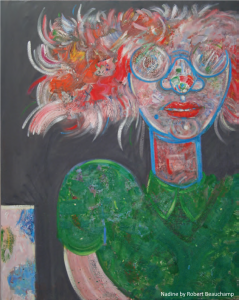 They will help you assess potential purchases (or emerging artists) with that goal in mind. Another advantage to buying in New Jersey—besides the good feeling that comes with supporting a local business— is that gallery owners here may be much more likely to work a deal that fits your finances. Their overhead is lower than in the city, which may translate into wiggle room when you whip out the checkbook. Finally, keep in mind as you shop or budget for fine art that you are buying something that could turn out to be a family treasure. Art is timeless. Art is priceless. Unlike a sofa or granite countertop, it does not depreciate the moment it walks through your front door. If you’ve chosen wisely, in fact, it could appreciate dramatically. And as it moves from your home to your children’s, and then to your children’s children’s and beyond, it serves as a link between the generations. In the meantime, this investment will enhance your quality of life every time you fix your gaze upon it. Indeed, as Pablo Picasso once observed, art “washes away from the soul the dust of everyday life.” Amen to that. Some other art icons have also had a thing or two to say on the subject. Jackson Pollock famously noted that every good painter paints what he is. Rembrandt suggested practicing what you know to make clear what now you do not know. Believe it or not, Michelangelo often insisted, I can actually draw. Clarity and simplicity enabled these great painters to create magnificently complex works of art. When it comes to buying art in the Garden State, a little clarity and simplicity also goes a long way. EDGE
They will help you assess potential purchases (or emerging artists) with that goal in mind. Another advantage to buying in New Jersey—besides the good feeling that comes with supporting a local business— is that gallery owners here may be much more likely to work a deal that fits your finances. Their overhead is lower than in the city, which may translate into wiggle room when you whip out the checkbook. Finally, keep in mind as you shop or budget for fine art that you are buying something that could turn out to be a family treasure. Art is timeless. Art is priceless. Unlike a sofa or granite countertop, it does not depreciate the moment it walks through your front door. If you’ve chosen wisely, in fact, it could appreciate dramatically. And as it moves from your home to your children’s, and then to your children’s children’s and beyond, it serves as a link between the generations. In the meantime, this investment will enhance your quality of life every time you fix your gaze upon it. Indeed, as Pablo Picasso once observed, art “washes away from the soul the dust of everyday life.” Amen to that. Some other art icons have also had a thing or two to say on the subject. Jackson Pollock famously noted that every good painter paints what he is. Rembrandt suggested practicing what you know to make clear what now you do not know. Believe it or not, Michelangelo often insisted, I can actually draw. Clarity and simplicity enabled these great painters to create magnificently complex works of art. When it comes to buying art in the Garden State, a little clarity and simplicity also goes a long way. EDGE
Editor’s Note: Kathy Donnelly is an art collector and dealer. She owns Beauregard Fine Art Gallery (beauregardfineart.com) in Rumson.
“Richer took over the old pizza joint in downtown Maplewood in early 2007 and re-made it to suit his dreams and palate.”
 Seven forty-five on a Saturday night, and the show is about to begin. Regulars file into the corner storefront at Maplewood and Baker, settling into seats that almost seem assigned. There are nods of recognition, glances over to the fellow in charge, a sense of anticipation in not-sohushed exchanges. Corks pop. Wine glasses are filled and the floor crew at Arturo’s switches into high gear. At the rear of the intimate restaurant, chef/maestro Dan Richer already has warmed up his wood-burning oven by firing dozens and dozens of pizzas for the early-eating crowd. But right now, as the 8 o’clock hour approaches, he’s dispatching cups filled with husked cherries, also known as bush cherries. They’re nutty little fruits that look a bit like miniature tomatillos, but taste like nothing else on the planet. Peel back the papery skins, flick the fruit into your mouth and wonder how you’ll ever again eat another sugared peanut or mushy olive as a prelude to dinner. They’re the ideal starter for Richer’s unique show. It’s dinner theater, this ritualistic Saturday night minuet between chef and diner, a paean to all that’s locally grown and produced and catches the chef’s discerning eye. There’s no formal bill of fare on this night, just a procession of plates served forth with no fanfare and minimal explanation. It’s based on the trust Richer has built up between himself and his diners, folks who have warmed to the distinctive style of both the rustic, no-frills dining space and the man who delivers a spare, yet deeply satisfying dining experience. “Coppa, house-made,” is the way our server describes the next dish. He knows no embellishment is needed to sell diners on the veritable kaleidoscope made from cured pork shoulder and its fat, presented as delicate slices of salumi that appear air-brushed on the platter. Alone, or partnered with crusty, country bread, this coppa is pretty darn perfect. Actually, so is Arturo’s. Richer took over the old pizza joint in downtown Maplewood in early 2007 and re-made it to suit his dreams and palate. Pizzas are now of the modern age – that is to say, they go back in time to ovens fueled by wood, to crusts born of kneading and slow-rise techniques, to toppings that tilt toward Spartan, not extra-anything. A welledited selection of those thin-crust pizzas plus pastas are the order of the night five days a week, with Tuesdays turned over to a scaled-back tasting menu and Saturdays the destination-diner extravaganza. On that night, Richer goes strictly market and microseasonal. It’s completely, obsessively ingredient-driven in a good way. Ask about the olive oil, for instance, and you’ll be brought a bottle of the newest member of the Arturo’s Olive Oil Brigade, an unfiltered number from Puglia whose fruitiness makes already silky-sweet scallops even silkier and sweeter. These scallops are the star of Richer’s crudo, a bowl of dense and rich shellfish bathed in the Puglian oil
Seven forty-five on a Saturday night, and the show is about to begin. Regulars file into the corner storefront at Maplewood and Baker, settling into seats that almost seem assigned. There are nods of recognition, glances over to the fellow in charge, a sense of anticipation in not-sohushed exchanges. Corks pop. Wine glasses are filled and the floor crew at Arturo’s switches into high gear. At the rear of the intimate restaurant, chef/maestro Dan Richer already has warmed up his wood-burning oven by firing dozens and dozens of pizzas for the early-eating crowd. But right now, as the 8 o’clock hour approaches, he’s dispatching cups filled with husked cherries, also known as bush cherries. They’re nutty little fruits that look a bit like miniature tomatillos, but taste like nothing else on the planet. Peel back the papery skins, flick the fruit into your mouth and wonder how you’ll ever again eat another sugared peanut or mushy olive as a prelude to dinner. They’re the ideal starter for Richer’s unique show. It’s dinner theater, this ritualistic Saturday night minuet between chef and diner, a paean to all that’s locally grown and produced and catches the chef’s discerning eye. There’s no formal bill of fare on this night, just a procession of plates served forth with no fanfare and minimal explanation. It’s based on the trust Richer has built up between himself and his diners, folks who have warmed to the distinctive style of both the rustic, no-frills dining space and the man who delivers a spare, yet deeply satisfying dining experience. “Coppa, house-made,” is the way our server describes the next dish. He knows no embellishment is needed to sell diners on the veritable kaleidoscope made from cured pork shoulder and its fat, presented as delicate slices of salumi that appear air-brushed on the platter. Alone, or partnered with crusty, country bread, this coppa is pretty darn perfect. Actually, so is Arturo’s. Richer took over the old pizza joint in downtown Maplewood in early 2007 and re-made it to suit his dreams and palate. Pizzas are now of the modern age – that is to say, they go back in time to ovens fueled by wood, to crusts born of kneading and slow-rise techniques, to toppings that tilt toward Spartan, not extra-anything. A welledited selection of those thin-crust pizzas plus pastas are the order of the night five days a week, with Tuesdays turned over to a scaled-back tasting menu and Saturdays the destination-diner extravaganza. On that night, Richer goes strictly market and microseasonal. It’s completely, obsessively ingredient-driven in a good way. Ask about the olive oil, for instance, and you’ll be brought a bottle of the newest member of the Arturo’s Olive Oil Brigade, an unfiltered number from Puglia whose fruitiness makes already silky-sweet scallops even silkier and sweeter. These scallops are the star of Richer’s crudo, a bowl of dense and rich shellfish bathed in the Puglian oil 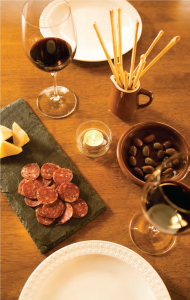 with needle-thin slivers of French breakfast radish that add color and bite to the raw-fish dish. There are a few twirls of baby greens—so tiny that they probably are better thought of as newborn greens—to add color and contrast, and that’s it. It’s gentle, it’s refined, it’s an exacting example of what this chef is trying to do: simplify, simplify, simplify. That’s his culinary style, and it’s both brave and smart. While others less secure in their métier, less confident of their skills, fuss and add a silly number of frills to a plate, Richer practices the art of the take-away. He pares down a dish to its fundamentals, letting his ingredients assume center stage. A salad of baby arugula, for instance, is accented by thin slices of peaches and flecks of shaved Parmigiano- Reggiano. That’s it. High-season tomatoes, both cheery Sun Golds and beefy San Marzanos, are chopped and set in a glass compote to be served only with a sprinkling of sea salt. The tomatoes’ own juices make it good to the last drop. Tagliolini, a thin-strand pasta, is too fresh, too creamy in taste and texture to need anything more than a handful of teeny cubes of zucchini and a little grated Parmigiano Reggiano. We all but bribed our server to admit to an infusion of cream or butter. No, we were told. Nothing but the fresh pasta, the zucchini, the Parmigiano-Reggiano. That’s what good pasta can do. And a good hunk of pork shank needs but a bed of earthy kale to keep it company. In northern states, it’s such an underappreciated partnership, anything pig and greens. In Richer’s hands, it could be the next big thing in Yankeeland. His whipped ricotta, served with raspberries and what possibly was a mirage of shaved dark chocolate, is precisely what dessert should be: neither overwhelmingly sweet nor baroque in scale. I would’ve had seconds had seconds been offered, however, since I’ve always dreamed of cheese and fruit being transformed into just this kind of finale. I left Arturo’s thinking that either I should 1) move to Maplewood or 2) convince Richer to take his show on the road to my hometown. I’ll further assess these options when I return to Arturo’s for the duck prosciutto, hazelnut-pear salad and pasta with wild boar ragu. For without a doubt, this food needs to be a regular part of my eating life. EDGE
with needle-thin slivers of French breakfast radish that add color and bite to the raw-fish dish. There are a few twirls of baby greens—so tiny that they probably are better thought of as newborn greens—to add color and contrast, and that’s it. It’s gentle, it’s refined, it’s an exacting example of what this chef is trying to do: simplify, simplify, simplify. That’s his culinary style, and it’s both brave and smart. While others less secure in their métier, less confident of their skills, fuss and add a silly number of frills to a plate, Richer practices the art of the take-away. He pares down a dish to its fundamentals, letting his ingredients assume center stage. A salad of baby arugula, for instance, is accented by thin slices of peaches and flecks of shaved Parmigiano- Reggiano. That’s it. High-season tomatoes, both cheery Sun Golds and beefy San Marzanos, are chopped and set in a glass compote to be served only with a sprinkling of sea salt. The tomatoes’ own juices make it good to the last drop. Tagliolini, a thin-strand pasta, is too fresh, too creamy in taste and texture to need anything more than a handful of teeny cubes of zucchini and a little grated Parmigiano Reggiano. We all but bribed our server to admit to an infusion of cream or butter. No, we were told. Nothing but the fresh pasta, the zucchini, the Parmigiano-Reggiano. That’s what good pasta can do. And a good hunk of pork shank needs but a bed of earthy kale to keep it company. In northern states, it’s such an underappreciated partnership, anything pig and greens. In Richer’s hands, it could be the next big thing in Yankeeland. His whipped ricotta, served with raspberries and what possibly was a mirage of shaved dark chocolate, is precisely what dessert should be: neither overwhelmingly sweet nor baroque in scale. I would’ve had seconds had seconds been offered, however, since I’ve always dreamed of cheese and fruit being transformed into just this kind of finale. I left Arturo’s thinking that either I should 1) move to Maplewood or 2) convince Richer to take his show on the road to my hometown. I’ll further assess these options when I return to Arturo’s for the duck prosciutto, hazelnut-pear salad and pasta with wild boar ragu. For without a doubt, this food needs to be a regular part of my eating life. EDGE
Arturo’s 180 Maplewood Avenue, Maplewood 973.378.5800 Open Sunday through Thursday from 11:30 a.m. to 9 p.m., Fridays and Saturdays from 11:30 a.m. to 10 p.m. Reservations are accepted only for the Tuesday and Saturday night tasting menus—in fact, they are required for those nights. The Tuesday night tasting ($30) begins at 7 and the Saturday night tasting ($48) at 7:45. Pizzas start at $6.50 and go up to $16.50; pastas range in price from $9.95 to $16.95; salads from $7.95 to $10.95; salumi is $7.95 for an individual portion and $15.95 for the daily selection. All major credit cards are accepted. BYOB. Service is cheerful and helpful.

What happens in Vegas stays in Vegas. Well, that is not entirely accurate. Actress RUTINA WESLEY, one of the stars of the HBO series True Blood, did not 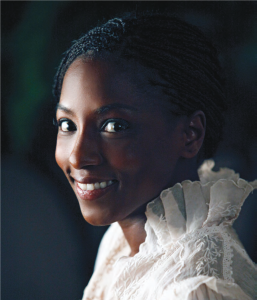 stay. The daughter of professional dancers, the Las Vegas born-and-bred Wesley took her show on the road—first to the University of Evansville as an undergrad and then to the Juilliard School in New York. Along the way, Wesley also studied at London’s Royal Academy of Dramatic Art. A plum role on Broadway in David Hare’s The Vertical Hour and the lead in the 2007 dance film How She Move earned her an audition for Alan Ball, who was casting the tricky role of Tara Thornton in True Blood. The depth she brought to the character not only won her the part, it has since made Wesley one of the most popular characters on television. EDGE Assignments Editor Zack Burgess took the actress back to Las Vegas to talk about her show business roots and inspirations, and to explore the imaginative and eclectic Rutina Look (his words, not hers). The ground rules for the interview? Only one “vampire question” allowed (our rules, not hers). Oh, the pressure! As usual, Zack saved the best for last.
stay. The daughter of professional dancers, the Las Vegas born-and-bred Wesley took her show on the road—first to the University of Evansville as an undergrad and then to the Juilliard School in New York. Along the way, Wesley also studied at London’s Royal Academy of Dramatic Art. A plum role on Broadway in David Hare’s The Vertical Hour and the lead in the 2007 dance film How She Move earned her an audition for Alan Ball, who was casting the tricky role of Tara Thornton in True Blood. The depth she brought to the character not only won her the part, it has since made Wesley one of the most popular characters on television. EDGE Assignments Editor Zack Burgess took the actress back to Las Vegas to talk about her show business roots and inspirations, and to explore the imaginative and eclectic Rutina Look (his words, not hers). The ground rules for the interview? Only one “vampire question” allowed (our rules, not hers). Oh, the pressure! As usual, Zack saved the best for last.
EDGE: You grew up in a town that isn’t always known for its taste, but it is definitely known for its style.
RW: True.
EDGE: Yet you seem to have developed a keen sense for both. How did that happen?
RW: Being the daughter of a mother who was a professional dancer had a definite influence. My mother loves to dress and she has a great sense of style, with the feathers and colors and all. I can go in any direction, from elegant to tomboyish. I think traveling as much as I have has helped, as well.
EDGE: Does your sense of style come naturally or is it something that you have to plan and work on?
RW: A little bit of both. I’m a chameleon with my style because there are so many things I like; it’s hard for me to choose. I love to glam it up for events and wear things that I can’t in everyday life, but I also love to run around in jeans and sneakers, especially since I’m secretly a sneaker freak.
EDGE: Is there a story behind the Rutina Look?
RW: I definitely consider myself a New York girl. I just like the style of New York. There really is no story behind my look. I just think I have a good sense of what makes good and bad fashion—although I have been known to take risk with fashion from time to time.
EDGE: Who are some of the designers that you like?
RW: Jean Paul Gaultier, Cynthia Vincent, Stacey Bendet [Alice & Olivia], Versace, Tadashi—there are just too many to name. I like a variety. It’s nice to switch it up every once in a while.
EDGE: Were there actors you felt drawn to as a girl—any that you wanted to model yourself after?
RW: Of course. Angela Bassett, Viola Davis, Meryl Streep and Julia Roberts come to mind. I consider them all people who carry themselves with dignity and class, and who have mastered their craft.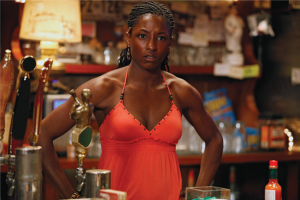
EDGE: On True Blood, there is a lot of grittiness to your character, Tara, in the face of unimaginable danger and evil. Where do you reach down and pull that from?
RW: I know a few people who were forced to grow up too fast because of something that happened in their lives. I tend to draw from the stories I’ve heard from them. I’ll just take myself to these dark places and use my imagination, to picture what it would be like to grow up in a home that was abusive and volatile, try to think of how that would make me feel. I do always try to come from a place of honesty and humanity, because I don’t want it to be too over-the-top. A lot of the time, though, I can get a true sense of things from the words I’m given in the script. I’m lucky to be working with some amazing writers.
EDGE: Talk about the performing arts school you attended in Vegas. People picture Fame on the Strip. What was the reality like?
RW: Yeah, I can see how people would think that. You know what our first play was? Fame! It was a ton of fun. We were always doing something. Whether we were singing songs from Grease or performing Shakespeare, I love Shakespeare, it was definitely a wonderful experience. It prepared me for what was to come and fueled my desire and drive to become who I am today.
EDGE: What percentage of your classmates had parents who were entertainers, as you did?
RW: Not many at all. Most of the kids’ parents either worked on the Strip or had their own businesses.
EDGE: You mentioned your mother’s influence. In what ways has your father helped your career?
RW: Both of my parents prepared me for what to expect as I made my way in this business. My father was always there to say make sure you read something before you sign it, and makes sure you have a lawyer.
EDGE: Was acting your first love?
RW: I would have to say dance was my first love. But I had to choose, and acting just made more sense. With acting I can do so many things. I can even dance if I want to. I can always dance in a musical.
EDGE: After earning your theater degree at Evansville, you made the quantum leap to Juilliard. Looking back, can you identify the performances that won you a spot there?
RW: At Evansville we did a lot of Shakespeare, and we had to perform many monologues, which they knew about at Juilliard. So they made me do all of them, which is amazing when you think about it.
EDGE: Looking back, which Juilliard teachers played key roles in your development as an actress?
RW: John Stix and Richard Feldman were very influential.
EDGE: Is Juilliard harder to get in or stay in? And who were some of the teachers who were influential in your development as a performer?
RW: Both are hard! They used to have a cut rule, but they don’t anymore, which is good. That way you can really concentrate on your craft and not worry about being sent home. It was definitely challenging, but worth every minute of my time. It was fun—just an awesome experience. I met lifelong friends there. I met my husband there. It was, and has been, one of the greatest experiences of my life. Recently I was walking with a friend from high school and he reminded me that I once said that I would go to Juilliard. I didn’t remember that. He reminded me that I was living out my dream. I couldn’t help but start crying right there on the streets of New York.
EDGE: When you were cast in The Vertical Hour on Broadway, what kind of expectations did you have in terms of building a personal or professional relationship with Julianne Moore?
RW: None really. But she was nothing but exceptional to work with and be around. It was a small cast, so we really became like a family. To work with Julianne and Bill Nighy, who is a true professional, was a remarkable experience. And to work with people you admire and to have them treat you well, it was such a pleasant experience. I have nothing but positive memories of working with Julianne and being around her.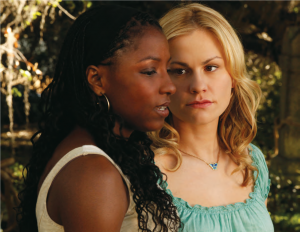
EDGE: What did you learn about the craft from her?
RW: Her work ethic was amazing. The way Julianne immersed herself in her character was a very good thing to see. She works so hard at her craft that it can’t help but rub off on you—especially if you are willing to learn. She’s a risk-taker. She’s not afraid to do different things with a character.
EDGE: In what ways did the director, Sam Mendes, have an impact on your approach to performing?
RW: He was always working to get the best out of you. He forced—and allowed—me to stretch as an actress. Which is what good directors do.
EDGE: Juilliard connections can take you in any number of directions. In your case, it led to your part on True Blood, through a classmate, Nelsan Ellis, who is now your co-star.
RW: Yes, we have known each other forever and have been good friends throughout. So it was great when he recommended me for the part. It was so natural because he knew my work and what I was capable of. When I found out I got the part I was driving out of a Starbucks parking lot. I was so excited I almost crashed the car. So I pulled over and just started screaming.
EDGE: Is it fun being a celebrity?
RW: It’s fun. Although I still have a hard time considering myself a celebrity. But in this business if you are being recognized for what you do, it’s a sign that you are doing well. And so far, it has been very good to me and I am enjoying it. I consider myself fortunate.
EDGE: Final question. Would you rather be trapped in a room with a vampire or a Hollywood agent?
RW: I would have to say a vampire. At least with a vampire, I think I’d have a chance of surviving. EDGE
Editor’s Note: Rutina Wesley was hailed in a 2008 New York Times profile for her “reedy voice and crackling energy,” as well as the subtlety she brings to the role of Tara. Wesley and her fellow True Blood cast members earned a Dramatic Ensemble nomination at the 2010 SAG Awards.
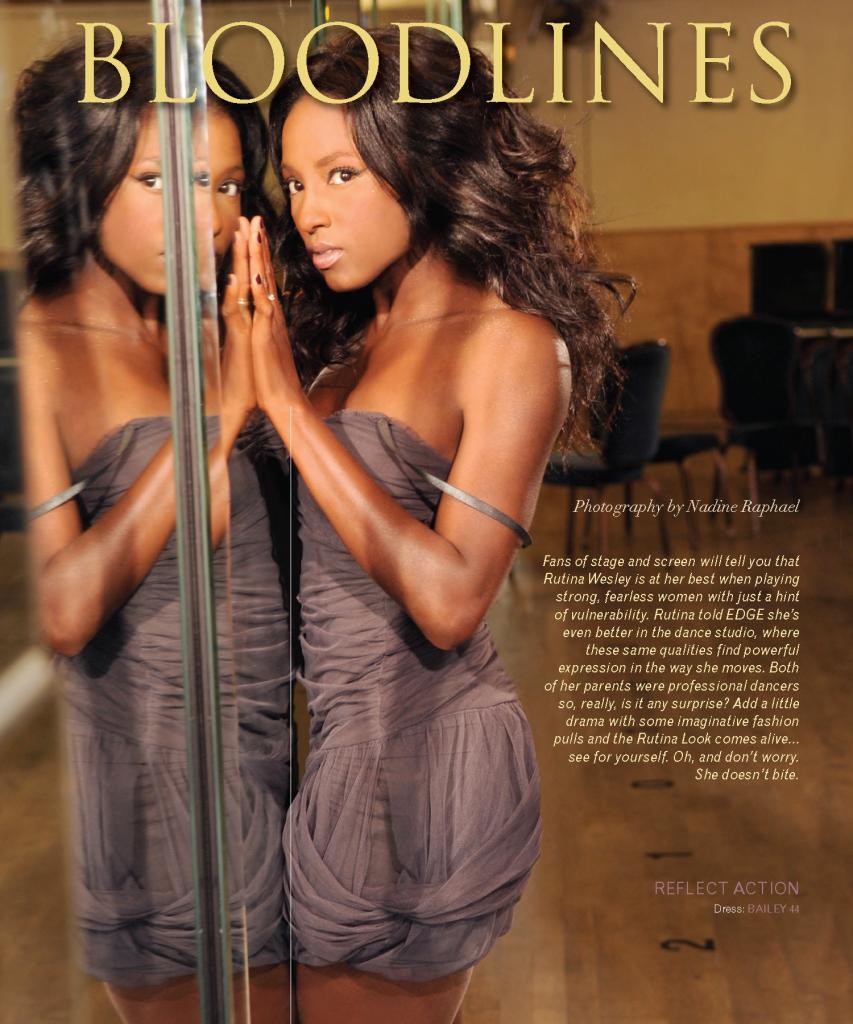
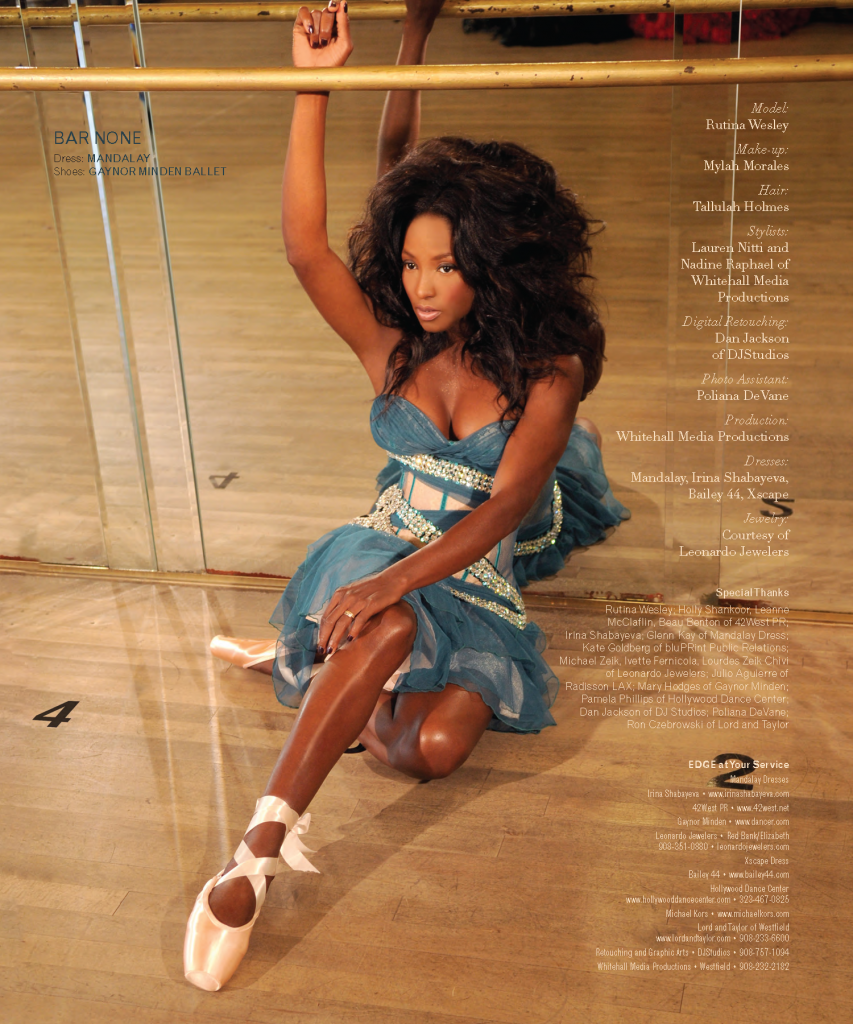
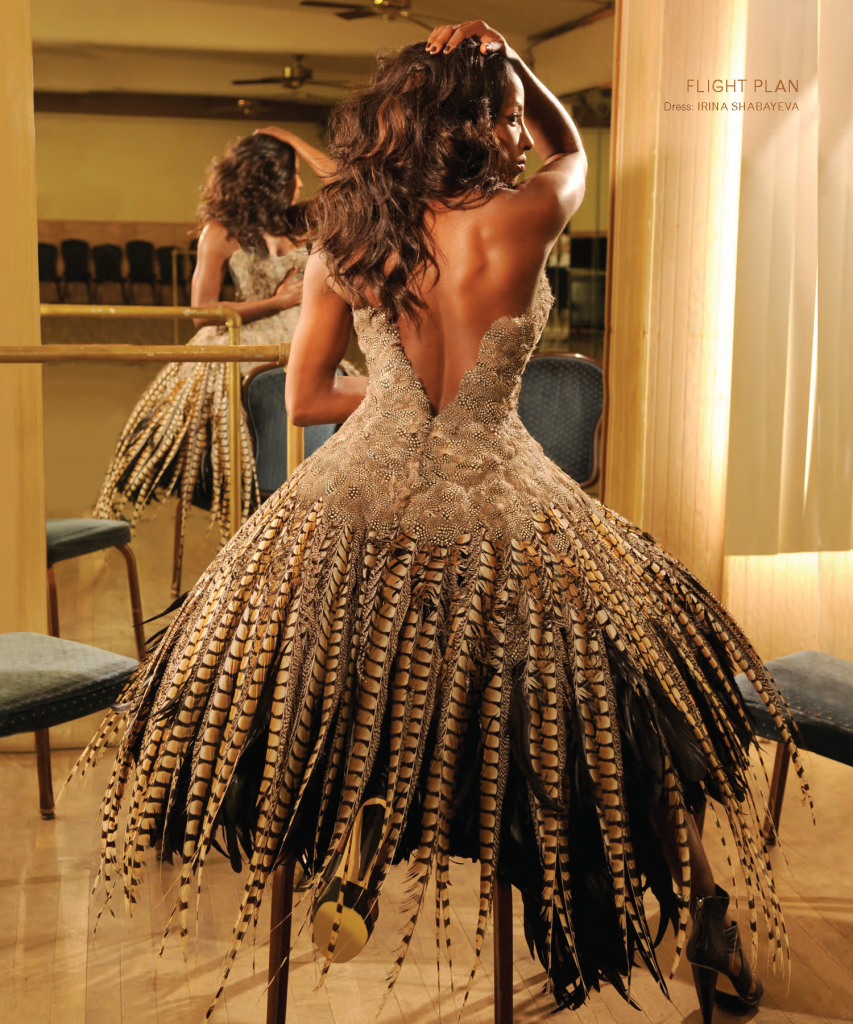

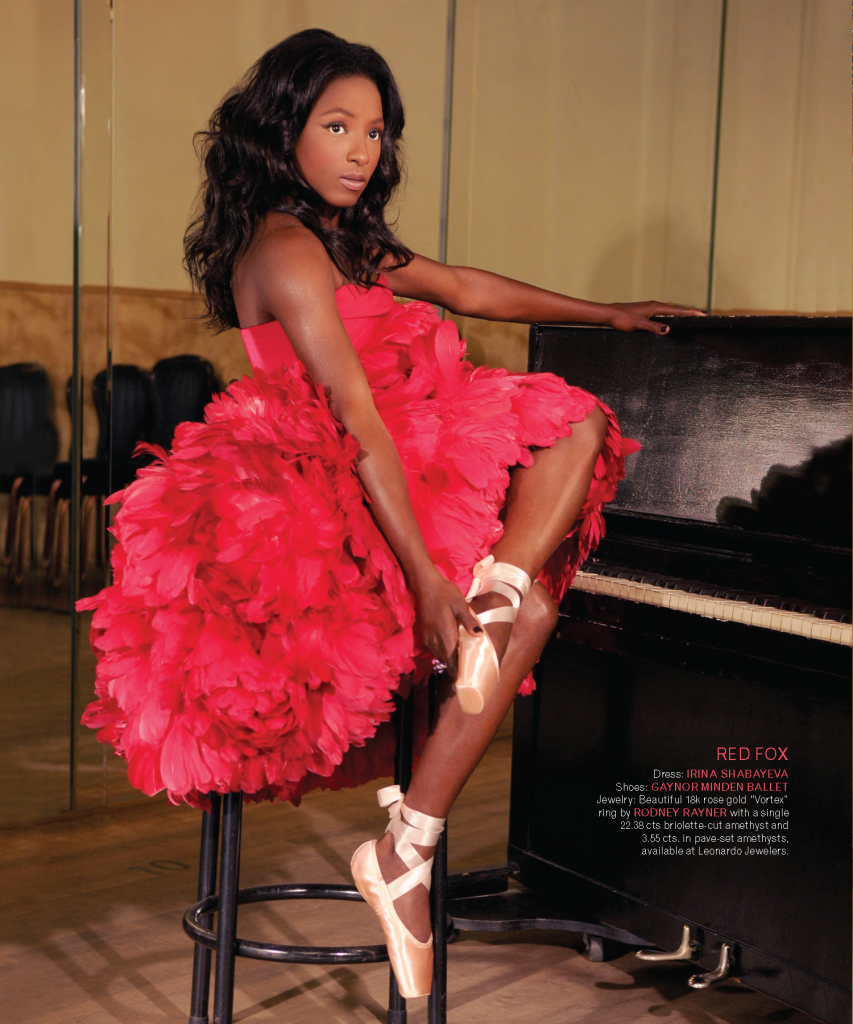
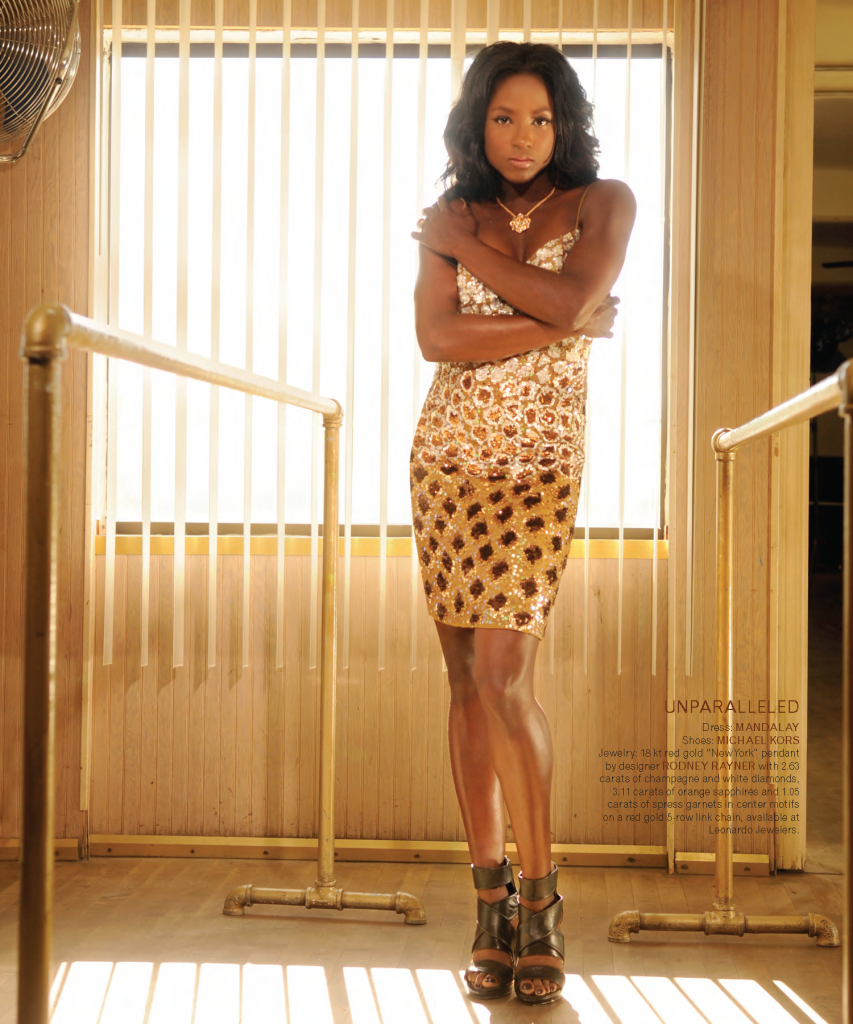
A lifelong appetite for reading begins with that first taste in the classroom.
 A great debate is raging in the tech world. It concerns the type of devices today’s youth will be using to read books a decade from now. Will there be a way-cooler version of the iPad? Will smart phones become personal libraries? Will the printed page magically appear in space a foot or two away? Fun stuff. Star Trek stuff—going where no book has gone before. But these flights of fancy tend to overlook a more immediate issue concerning New Jersey’s parents and educators: Will tomorrow’s 20-somethings be reading books at all? Before sounding the alarm bell too loudly, it’s worth noting that New Jersey students, as a group, mop up on just about every standardized test that measures reading proficiency. However, proficiency does not guarantee a lifelong love of reading. Every scrap of evidence available on the reading habits of adults tells us that they echo their experience with literature in grade school and high school. Indeed, kids who regard reading
A great debate is raging in the tech world. It concerns the type of devices today’s youth will be using to read books a decade from now. Will there be a way-cooler version of the iPad? Will smart phones become personal libraries? Will the printed page magically appear in space a foot or two away? Fun stuff. Star Trek stuff—going where no book has gone before. But these flights of fancy tend to overlook a more immediate issue concerning New Jersey’s parents and educators: Will tomorrow’s 20-somethings be reading books at all? Before sounding the alarm bell too loudly, it’s worth noting that New Jersey students, as a group, mop up on just about every standardized test that measures reading proficiency. However, proficiency does not guarantee a lifelong love of reading. Every scrap of evidence available on the reading habits of adults tells us that they echo their experience with literature in grade school and high school. Indeed, kids who regard reading  as an unpleasant reality of their education— or worse, as cruel and unusual punishment that steals precious time away from video games, social networking and VH1—are unlikely to pick up a decent book after the age of 20. Conversely, kids who encounter great books and great teachers, or who are at least challenged in some way by important literature, are not only far more inclined to be eager readers throughout adulthood. They are much more likely to see the world in a layered and sophisticated way. Given the powerful pull of competing media, when is the right time to start introducing great books to young readers? Although educators may quibble about theories and practices, on this one point, there is near-universal agreement. Harriet Marcus, chair of the Upper School English Department at Oak Knoll School of the Holy Child in Summit, insists that it is “never too early to present the great universal ideas to children.” Jane Freeman, of Solomon Schechter Day School in West Orange, maintains that great literature should be introduced from the moment “a child can understand the spoken word.” Noreen Andrews, of Union Catholic in Scotch Plains, concurs. “At birth,” she smiles. Actually, there’s some truth to this idea. “Babies are introduced to great literature when they are sung to and read to as infants,” points out Sister Regina Martin, Principal of Mother Seaton Regional High School in Clark. She says that “while the books they hear are not great classics per se, babies learn to love the sound of literature, whether it is from a song, a nursery rhyme, or a bedtime story.” Once a school gets its hands on a young reader, that’s when things can go very right or very wrong. Talented and impassioned leadership is a must; even for the most taciturn of students, a teacher’s enthusiasm for the material ultimately will prove contagious. An instructor whose primary goal is to plow through the material, test the kids and then move on, is likely to leave uninspired readers in his or her wake. From a parent’s perspective, there is only so
as an unpleasant reality of their education— or worse, as cruel and unusual punishment that steals precious time away from video games, social networking and VH1—are unlikely to pick up a decent book after the age of 20. Conversely, kids who encounter great books and great teachers, or who are at least challenged in some way by important literature, are not only far more inclined to be eager readers throughout adulthood. They are much more likely to see the world in a layered and sophisticated way. Given the powerful pull of competing media, when is the right time to start introducing great books to young readers? Although educators may quibble about theories and practices, on this one point, there is near-universal agreement. Harriet Marcus, chair of the Upper School English Department at Oak Knoll School of the Holy Child in Summit, insists that it is “never too early to present the great universal ideas to children.” Jane Freeman, of Solomon Schechter Day School in West Orange, maintains that great literature should be introduced from the moment “a child can understand the spoken word.” Noreen Andrews, of Union Catholic in Scotch Plains, concurs. “At birth,” she smiles. Actually, there’s some truth to this idea. “Babies are introduced to great literature when they are sung to and read to as infants,” points out Sister Regina Martin, Principal of Mother Seaton Regional High School in Clark. She says that “while the books they hear are not great classics per se, babies learn to love the sound of literature, whether it is from a song, a nursery rhyme, or a bedtime story.” Once a school gets its hands on a young reader, that’s when things can go very right or very wrong. Talented and impassioned leadership is a must; even for the most taciturn of students, a teacher’s enthusiasm for the material ultimately will prove contagious. An instructor whose primary goal is to plow through the material, test the kids and then move on, is likely to leave uninspired readers in his or her wake. From a parent’s perspective, there is only so  much influence you can exert when it comes to picking a teacher to foster a love of books. Whether your child is in public or private school, it’s a hiring and firing issue that is out of your hands. Where parents can affect the outcome (besides encouraging reading at home, of course) is by asking questions about a school’s class size and format. Classroom discussion is absolutely, positively the number one factor when it comes to understanding and appreciating literature. Here, the private schools—by virtue of their smaller class sizes—typically have a distinct edge. Andrews says that small-group discussions “enable students and teachers to dig deeper for the full experience.” Karen Calta, Assistant Directress at Mount St. Mary Academy in Watchung, adds that they are “invaluable in that they serve students well in many academic areas.” Calta explains that students across a wide range of subjects are encouraged at Mount St. Mary to develop their own interpretations, while teachers serve as guides. Andrew Webster of The Wardlaw-Hartridge School in Edison agrees that an understanding and appreciation of literature is not merely a means for improving academic performance in English. “Done properly,” he says, “it enriches the lives of students and their understanding of what it means to be human. It allows them to step beyond their own experience, develop empathy, and form careful judgment.” According to Nat Conard, Headmaster of The Pingry School, literary discussion does more
much influence you can exert when it comes to picking a teacher to foster a love of books. Whether your child is in public or private school, it’s a hiring and firing issue that is out of your hands. Where parents can affect the outcome (besides encouraging reading at home, of course) is by asking questions about a school’s class size and format. Classroom discussion is absolutely, positively the number one factor when it comes to understanding and appreciating literature. Here, the private schools—by virtue of their smaller class sizes—typically have a distinct edge. Andrews says that small-group discussions “enable students and teachers to dig deeper for the full experience.” Karen Calta, Assistant Directress at Mount St. Mary Academy in Watchung, adds that they are “invaluable in that they serve students well in many academic areas.” Calta explains that students across a wide range of subjects are encouraged at Mount St. Mary to develop their own interpretations, while teachers serve as guides. Andrew Webster of The Wardlaw-Hartridge School in Edison agrees that an understanding and appreciation of literature is not merely a means for improving academic performance in English. “Done properly,” he says, “it enriches the lives of students and their understanding of what it means to be human. It allows them to step beyond their own experience, develop empathy, and form careful judgment.” According to Nat Conard, Headmaster of The Pingry School, literary discussion does more  than motivate, challenge and engage. In a learning environment that embraces diversity (Pingry counts itself among the New Jersey schools that draw from a particularly broad cultural, religious and socioeconomic spectrum), it also fosters an appreciation for multiple viewpoints. “In class discussions, our students hear ideas from students whose backgrounds are very different than their own,” Conard says. Of course, the “must-reads” provide plenty of fodder for class discussion. Simple themes have a fun way of fueling spirited debates. In Charles Dickens’ A Christmas Carol, the lesson is that cruel people can change. In Harper Lee’s To Kill A Mockingbird, young readers learn that strong people can help those in trouble. William Shakespeare’s A Midsummer Night’s Dream is a reminder that life can be filled with fantasy and fun. A great book is never finished saying what it intended to say. The words may have been consumed and the thoughts digested, but the ideas never stop. The classics go on teaching, inspiring and enlightening long after that first, indelible classroom experience. And like the moon that goes through phases and moods, so do young people and their relationship with books. Their interpretations grow. They change and they question. And, if everything goes right, as they move into adulthood, their hunger for the printed word is never satisfied. EDGE
than motivate, challenge and engage. In a learning environment that embraces diversity (Pingry counts itself among the New Jersey schools that draw from a particularly broad cultural, religious and socioeconomic spectrum), it also fosters an appreciation for multiple viewpoints. “In class discussions, our students hear ideas from students whose backgrounds are very different than their own,” Conard says. Of course, the “must-reads” provide plenty of fodder for class discussion. Simple themes have a fun way of fueling spirited debates. In Charles Dickens’ A Christmas Carol, the lesson is that cruel people can change. In Harper Lee’s To Kill A Mockingbird, young readers learn that strong people can help those in trouble. William Shakespeare’s A Midsummer Night’s Dream is a reminder that life can be filled with fantasy and fun. A great book is never finished saying what it intended to say. The words may have been consumed and the thoughts digested, but the ideas never stop. The classics go on teaching, inspiring and enlightening long after that first, indelible classroom experience. And like the moon that goes through phases and moods, so do young people and their relationship with books. Their interpretations grow. They change and they question. And, if everything goes right, as they move into adulthood, their hunger for the printed word is never satisfied. EDGE
EDITOR’S NOTE: Diane Alter is a freelance writer whose work has appeared in numerous newspapers and magazines. She has become our go-to girl whenever there’s a high-risk, low-reward story to be done. Before we sent Diane “back to school” for this story, she was assigned to cover the dating scene in New Jersey and New Jersey after midnight—with explicit instructions to produce two entirely different articles (which, somehow, she did). A couple of years ago, for another magazine, Diane checked herself into a monastery for a weekend of quiet reflection about her previous life working for a huge financial services company. Talk about penance!
 Wow. Has it really come to this? I recently learned there is someone at this magazine who has been forbidden to purchase his own clothing. I won’t say who it is, but you’ll find his name closer to the top of the masthead than the bottom. He is a reasonable, intelligent man with a good eye for what works and what doesn’t—except when he’s standing in front of a mirror. The expensive, yellow plaid shirt that doesn’t go with anything (except possibly a wood chipper) was the straw that broke the camel’s back. Since then, his wife must be present to approve all apparel purchases. This is nonnegotiable. If you—as a husband, wife or significant other—feel that you are headed toward this totalitarian state of clothes shopping, I can help. As the longtime host of the TV series A Makeover Story, it was actually my job. I found that focusing on five “essentials” often was enough to move fashion disasters in a safe direction, so that’s how I’ll handle it here. And just to keep things in season, we’ll focus on autumn. Men, stick to this plan and you never hear another What were you thinking! Ladies, arm your man with this information and you’ll soon be cutting him some slack (instead of cutting up his slacks) when he comes home from the store. Buy two sport coats. Although price-wise they will represent the lion’s share of the new wardrobe investment, quality navy blue wool and brown corduroy sport coats are an absolute necessity that will create endless outfits. I know that men can be tempted, at times, to purchase grey, black, or herringbone blazers (all of which can be dazzling), but coupling those colors and patterns with shirts, slacks and ties dramatically widens the playing field for fashion faux pas. I highly recommend J. Crew’s Cashmere Ludlow Legacy Blazer ($575) and Banana Republic’s Tailored Corduroy 2- Button Blazer in Camel ($198).
Wow. Has it really come to this? I recently learned there is someone at this magazine who has been forbidden to purchase his own clothing. I won’t say who it is, but you’ll find his name closer to the top of the masthead than the bottom. He is a reasonable, intelligent man with a good eye for what works and what doesn’t—except when he’s standing in front of a mirror. The expensive, yellow plaid shirt that doesn’t go with anything (except possibly a wood chipper) was the straw that broke the camel’s back. Since then, his wife must be present to approve all apparel purchases. This is nonnegotiable. If you—as a husband, wife or significant other—feel that you are headed toward this totalitarian state of clothes shopping, I can help. As the longtime host of the TV series A Makeover Story, it was actually my job. I found that focusing on five “essentials” often was enough to move fashion disasters in a safe direction, so that’s how I’ll handle it here. And just to keep things in season, we’ll focus on autumn. Men, stick to this plan and you never hear another What were you thinking! Ladies, arm your man with this information and you’ll soon be cutting him some slack (instead of cutting up his slacks) when he comes home from the store. Buy two sport coats. Although price-wise they will represent the lion’s share of the new wardrobe investment, quality navy blue wool and brown corduroy sport coats are an absolute necessity that will create endless outfits. I know that men can be tempted, at times, to purchase grey, black, or herringbone blazers (all of which can be dazzling), but coupling those colors and patterns with shirts, slacks and ties dramatically widens the playing field for fashion faux pas. I highly recommend J. Crew’s Cashmere Ludlow Legacy Blazer ($575) and Banana Republic’s Tailored Corduroy 2- Button Blazer in Camel ($198).  As you’ll see, navy and camel act as an absolute and infallible base for each and every autumn ensemble. They make up the keystone in the flying buttress of a well-rounded wardrobe. Purchase two pairs of Chinos. Don’t call them Khakis, because they aren’t the same. What most people consider a stereotypical khaki is really just the bottom of the barrel in the world of men’s cotton trousers. I hate to say it, because they serve many a purpose, but it’s true. The word Khaki, by the way, comes from the Urdu word for dusty. During the Raj, English soldiers would dye their whites the color of the omnipresent and unavoidable dust in south and central India. Thus, was born both the color and the English word. Chinos, the more sophisticated cousin, are distinguished by the combed cotton sheen and the lack of back pocket cover flaps. Lacoste’s Classic Chino in Beige ($88) is perfectly conservative and appropriate for any occasion. Get two tailored shirts. You want the real deal here. A well-constructed gent’s wardrobe requires them in at least two colors; white and a light blue pattern. I’ve always been a fan of the Brooks Brothers Luxury Slim Fit shirt ($79.50). It is timeless, fits properly, and is available with or without a French cuff. Brooks Brothers includes its trademark “knot” cufflinks with each French cuff purchase, which is a fantastic pair of fashion training wheels if I’ve ever seen them. Every man needs an essential brown shoe. Keep in mind, a go-to black shoe is always a necessity, but I find that in fall, a brown shoe is always more appropriate and will mesh with infinitely more outfit components. Hugo Boss has always been a favorite of mine. And, in this case, the Saharian Chukka Boot in Dark Brown ($275) is a timeless, rich choice. Chukka sub-ankle boots are a great option for brisk months and seem to carry with them both endless style and rugged masculinity—two big advantages in my book. Most men have no idea what it’s like to suffer for the beauty of a shoe, and this will be no exception. Chukka’s wear like a Jimmy Choo, but feel like a Birkenstock. I know, it’s so unfair! Accessorize. No male wardrobe would ever be complete without a little accoutrement. I know most men shy away from (if not perpetually underestimate) the importance of the accessory. A stubborn man can mount successful arguments against a beautiful watch, a great pair of cufflinks or a dazzling ring. However, a first-rate leather belt is a must have, not a should-have. Again, since we’re building our fashion masterpiece within the framework of an autumnal palate, I highly suggest brown—if for no other reason than the fact that brown leathers seem to retain more beauty in texture, and stand out more prominently against other fabrics. Ralph Lauren’s Saddle Leather Belt in Papaya ($175) is a winner through and through. Its gold roller buckle and rich saddle leather echo country craftsmanship, while conjuring images of the luxury of Savile Row. A suddenly and unexpectedly well-dressed man can be a startling reminder of all the other fantastic, useful, and sometimes mystifying purposes he serves. So go forth and shop with new purpose and confidence. To the Short Hills… and beyond! EDGE
As you’ll see, navy and camel act as an absolute and infallible base for each and every autumn ensemble. They make up the keystone in the flying buttress of a well-rounded wardrobe. Purchase two pairs of Chinos. Don’t call them Khakis, because they aren’t the same. What most people consider a stereotypical khaki is really just the bottom of the barrel in the world of men’s cotton trousers. I hate to say it, because they serve many a purpose, but it’s true. The word Khaki, by the way, comes from the Urdu word for dusty. During the Raj, English soldiers would dye their whites the color of the omnipresent and unavoidable dust in south and central India. Thus, was born both the color and the English word. Chinos, the more sophisticated cousin, are distinguished by the combed cotton sheen and the lack of back pocket cover flaps. Lacoste’s Classic Chino in Beige ($88) is perfectly conservative and appropriate for any occasion. Get two tailored shirts. You want the real deal here. A well-constructed gent’s wardrobe requires them in at least two colors; white and a light blue pattern. I’ve always been a fan of the Brooks Brothers Luxury Slim Fit shirt ($79.50). It is timeless, fits properly, and is available with or without a French cuff. Brooks Brothers includes its trademark “knot” cufflinks with each French cuff purchase, which is a fantastic pair of fashion training wheels if I’ve ever seen them. Every man needs an essential brown shoe. Keep in mind, a go-to black shoe is always a necessity, but I find that in fall, a brown shoe is always more appropriate and will mesh with infinitely more outfit components. Hugo Boss has always been a favorite of mine. And, in this case, the Saharian Chukka Boot in Dark Brown ($275) is a timeless, rich choice. Chukka sub-ankle boots are a great option for brisk months and seem to carry with them both endless style and rugged masculinity—two big advantages in my book. Most men have no idea what it’s like to suffer for the beauty of a shoe, and this will be no exception. Chukka’s wear like a Jimmy Choo, but feel like a Birkenstock. I know, it’s so unfair! Accessorize. No male wardrobe would ever be complete without a little accoutrement. I know most men shy away from (if not perpetually underestimate) the importance of the accessory. A stubborn man can mount successful arguments against a beautiful watch, a great pair of cufflinks or a dazzling ring. However, a first-rate leather belt is a must have, not a should-have. Again, since we’re building our fashion masterpiece within the framework of an autumnal palate, I highly suggest brown—if for no other reason than the fact that brown leathers seem to retain more beauty in texture, and stand out more prominently against other fabrics. Ralph Lauren’s Saddle Leather Belt in Papaya ($175) is a winner through and through. Its gold roller buckle and rich saddle leather echo country craftsmanship, while conjuring images of the luxury of Savile Row. A suddenly and unexpectedly well-dressed man can be a startling reminder of all the other fantastic, useful, and sometimes mystifying purposes he serves. So go forth and shop with new purpose and confidence. To the Short Hills… and beyond! EDGE
Home is where the heart is. And your main artery is Route 22.
Reunions can be tricky business. In this era of e-blasts, e-vites and e-stalking, we tend to overlook the raw courage it often takes to actually show up and confront your past face-to-face. P.F. Kluge’s new novel, A Call from Jersey, is all about reunions. Not just the familiar “Class of…” gatherings that roll around every half-decade or so. The author casts his net wide to examine reunions of all shapes and sizes, ultimately tugging at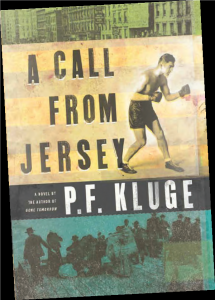 the very nature of estrangement and reconciliation. The Union County hamlet of Berkeley Heights serves as the epicenter for much of A Call from Jersey. Kluge is an unapologetic Jersey Boy with an intimate understanding of the suburban landscape. The story, much of it set in the 1980s, stretches across generations and cultures—and occasionally through the Holland Tunnel—to connect a father and son so preoccupied with how their lives have turned out that they can barely manage an adult conversation when they’re together. Gentle ironies define this relationship. Hans, a seventy-something German- American, is feeling lost in America. His son, George, is a travel writer capable of describing the exotic and mundane with equal aplomb, yet can’t quite put his finger on exactly where, or even what, “home” is. Kluge, it’s worth noting, is the man who supplied the literary inspiration for a pair of iconic films, Dog Day Afternoon and Eddie and the Cruisers. The former, about a Brooklyn bank robbery gone agonizingly awry, starred Al Pacino, fresh off Serpico and his two Godfather triumphs. The latter, about a fictional 1960s Jersey rock band, probably qualifies as a cult classic; certainly that’s true here in the Garden State. From a storytelling standpoint, the most appealing aspect of Eddie—the book and the film—is how effortlessly the narrative moves between past and present. Kluge utilizes time-shifting to great effect again in A Call from Jersey, transporting readers back to the 1930s in order to cobble together a kind of baseline for his characters. There we meet a young Hans, fresh off the boat from Germany, determined to shed his “greenhorn” label and start an American family. As the gap narrows between Hans and George, both timewise and relationship-wise, the author fills in the pertinent details to set up the surprise finish. The most distinctive aspect of A Call from Jersey is how comfortable Kluge is in his two different skins. The book is narrated in the first person, but alternates between Hans and George. The pressure of getting it right for two characters, says Kluge, is outweighed by the advantages of writing in multiple voices. “When you are writing, you are faced with that choice between first and third person,” he explains. “The first person is attractive to young writers because you can put a lot of yourself into the persona of the narrator. That’s fine, except there are certain places you can’t go. You can’t ‘play the field’—you’re a little bit stuck with that one person. The third person offers a larger palette, but you are at a distance from the characters.” “I like the idea of alternating first person narrators, though it’s not without problems. The voices have to be persuasive and can’t be too much alike. That challenged me, but I like it when it works. It combines the advantages of first and third person.” As Kluge’s two main characters stumble toward a long-neglected father-son reunion, they also pursue reunions of their own. George, feeling lost in his late 30s, is staring down the barrel of his 20th with that familiar mix of expectation and anxiety. Kluge, it is worth noting, is headed toward his 50th reunion this fall. In his case, it’s a not-insignificant trip from Gambier, Ohio, where he is Writer in Residence at Kenyon College. “The reason I faithfully attend my high school reunions is to see how lives are turning out,” he explains. “It’s what writers do. At a certain point, elements of competition, appearance and accomplishment dominate reunions. But over time it mellows out. You just want to stare at people and remember and connect. Reunions are about wanting to belong to that same bunch you had in the beginning. Or what’s left of it.”
the very nature of estrangement and reconciliation. The Union County hamlet of Berkeley Heights serves as the epicenter for much of A Call from Jersey. Kluge is an unapologetic Jersey Boy with an intimate understanding of the suburban landscape. The story, much of it set in the 1980s, stretches across generations and cultures—and occasionally through the Holland Tunnel—to connect a father and son so preoccupied with how their lives have turned out that they can barely manage an adult conversation when they’re together. Gentle ironies define this relationship. Hans, a seventy-something German- American, is feeling lost in America. His son, George, is a travel writer capable of describing the exotic and mundane with equal aplomb, yet can’t quite put his finger on exactly where, or even what, “home” is. Kluge, it’s worth noting, is the man who supplied the literary inspiration for a pair of iconic films, Dog Day Afternoon and Eddie and the Cruisers. The former, about a Brooklyn bank robbery gone agonizingly awry, starred Al Pacino, fresh off Serpico and his two Godfather triumphs. The latter, about a fictional 1960s Jersey rock band, probably qualifies as a cult classic; certainly that’s true here in the Garden State. From a storytelling standpoint, the most appealing aspect of Eddie—the book and the film—is how effortlessly the narrative moves between past and present. Kluge utilizes time-shifting to great effect again in A Call from Jersey, transporting readers back to the 1930s in order to cobble together a kind of baseline for his characters. There we meet a young Hans, fresh off the boat from Germany, determined to shed his “greenhorn” label and start an American family. As the gap narrows between Hans and George, both timewise and relationship-wise, the author fills in the pertinent details to set up the surprise finish. The most distinctive aspect of A Call from Jersey is how comfortable Kluge is in his two different skins. The book is narrated in the first person, but alternates between Hans and George. The pressure of getting it right for two characters, says Kluge, is outweighed by the advantages of writing in multiple voices. “When you are writing, you are faced with that choice between first and third person,” he explains. “The first person is attractive to young writers because you can put a lot of yourself into the persona of the narrator. That’s fine, except there are certain places you can’t go. You can’t ‘play the field’—you’re a little bit stuck with that one person. The third person offers a larger palette, but you are at a distance from the characters.” “I like the idea of alternating first person narrators, though it’s not without problems. The voices have to be persuasive and can’t be too much alike. That challenged me, but I like it when it works. It combines the advantages of first and third person.” As Kluge’s two main characters stumble toward a long-neglected father-son reunion, they also pursue reunions of their own. George, feeling lost in his late 30s, is staring down the barrel of his 20th with that familiar mix of expectation and anxiety. Kluge, it is worth noting, is headed toward his 50th reunion this fall. In his case, it’s a not-insignificant trip from Gambier, Ohio, where he is Writer in Residence at Kenyon College. “The reason I faithfully attend my high school reunions is to see how lives are turning out,” he explains. “It’s what writers do. At a certain point, elements of competition, appearance and accomplishment dominate reunions. But over time it mellows out. You just want to stare at people and remember and connect. Reunions are about wanting to belong to that same bunch you had in the beginning. Or what’s left of it.”
Editor’s Note: A Call from Jersey was published by The Overlook Press in September 2010. The author’s previous novel, Gone Tomorrow, was named one of the best books of 2008 by NPR.





